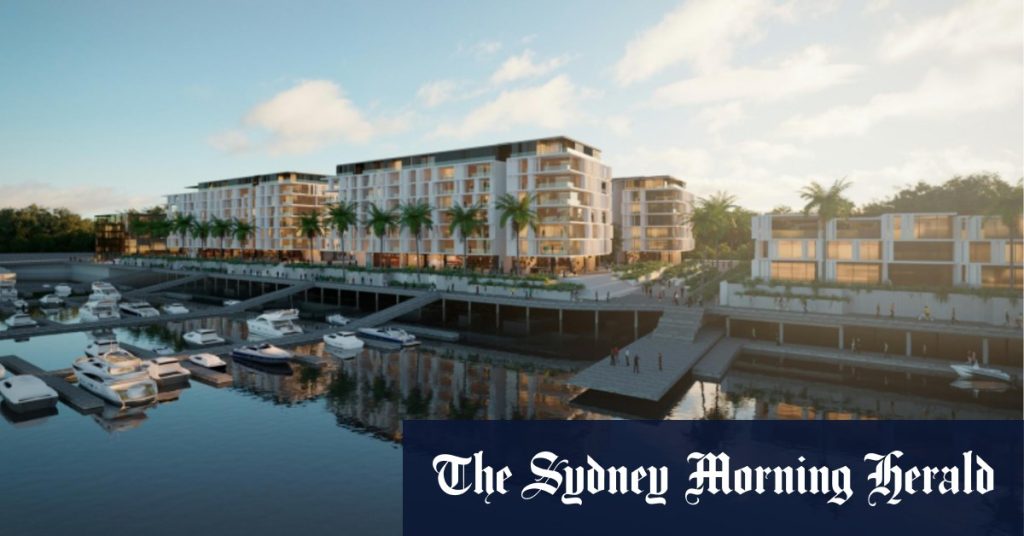The New South Wales Department of Planning has refused a proposal by Mirvac to construct a substantial residential development alongside the Georges River in Moorebank, a suburb within the Liverpool City Council area. The proposal, which included several multi-storey apartment buildings as part of a larger marina development, was deemed incompatible with regional planning objectives due to its location within a high-flood-risk zone with limited evacuation routes. The department’s refusal has been referred to the Independent Planning Commission for review.
A central point of contention is the proposed development’s impact on flood evacuation strategies. While Mirvac argues that the buildings can be designed to withstand floods and the development includes a “vertical evacuation” or shelter-in-place strategy for residents, the Department of Planning and the NSW State Emergency Service express serious concerns. They highlight the potential for the site to be isolated for extended periods during a major flood, rendering vertical evacuation unsafe. Furthermore, they argue the development would exacerbate existing evacuation challenges for residents in surrounding suburbs like Chipping Norton, by absorbing capacity from an already strained evacuation network dependent on planned road upgrades.
Flood modelling conducted by consultants BMT in 2020, submitted as evidence to the Independent Planning Commission, underscores the severity of the flood risk. The modelling classified the site as unsafe for both people and vehicles in scenarios ranging from a one-in-20-year flood to a maximum probable flood (MPF). The MPF projections predict water depths reaching 10 metres, with all buildings on the site considered vulnerable to structural failure. This data highlights the inherent danger of placing a large residential population in this location.
Liverpool Council also opposes the development, echoing the Department of Planning’s concerns about evacuation capacity. The council asserts that Mirvac’s proposal relies heavily on elevated building design to mitigate flood risk, but this does not address the broader issue of safe and efficient evacuation for a large influx of residents during a major flood event. Significantly, the council maintains that it is on track to meet its five-year housing targets without the additional dwellings proposed by Mirvac, diminishing the argument for the project’s necessity.
Mirvac, however, contests the refusal, arguing that the development would create an “extremely attractive residential opportunity” and contribute valuable housing stock to the rapidly growing south-west Sydney region. They further contend that the marina component of the project, which has already been approved, would provide significant public amenity, including a clubhouse, function centre, and open space. Local councillor Charish Mannoun supports the development, suggesting that it would bring much-needed amenities to the area and downplaying the extreme flood risk scenarios as overly cautious, likened to preparing for a “Noah’s flood.”
Despite these arguments, the Department of Planning has reaffirmed its opposition to the proposal to the Independent Planning Commission. Their continued refusal underscores the gravity of the flood risk and the potential danger to residents, both within the proposed development and in the wider community. The final decision now rests with the Independent Planning Commission, which will weigh the competing arguments concerning housing needs, public amenity, and, most critically, the safety and well-being of residents in the face of a potential flood disaster. Mirvac has stated that they will continue to engage with the commission’s assessment process. The commission’s determination will set a precedent for future developments in flood-prone areas, particularly in the context of increasing population density and the escalating risks posed by climate change. The decision will need to carefully balance the demand for housing and amenities against the paramount importance of public safety and disaster preparedness.

